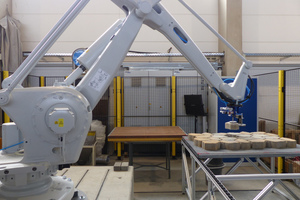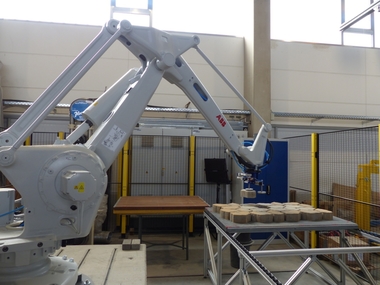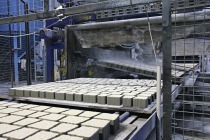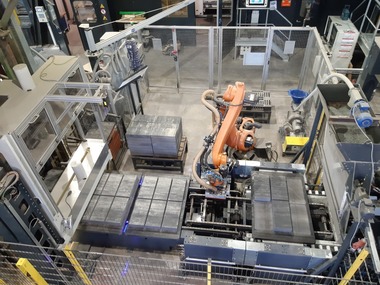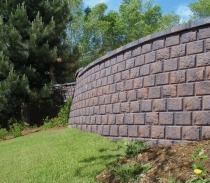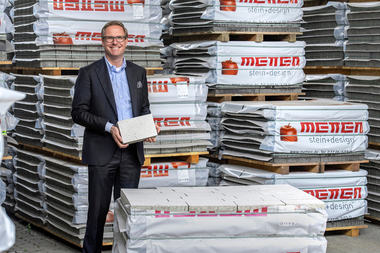Robot-controlled exchange of faulty blocks
Concrete blocks are no longer just square, practical, and gray – we encounter them in a wide range of shapes, colors, and structures. In concrete plants they are fully automatically manufactured, handled, and palletized, restricting human influence for the most part to process and quality control.
Every concrete block is visually inspected to detect visual irregularities. A worker decides whether a fault is quality-relevant and whether it requires an exchange of the block. If that is the case, the block will be manually removed and replaced by a faultless product. This procedure, however, is quite difficult to implement, since – according to the type of block manufactured, different concrete blocks in diverse shapes will be on a transport pallet at any one time. Furthermore, deviations in coloring or in the surface structure and pattern may occur. Such wide ranges of variations place strict requirements on visual identification of defects and makes exchange considerably difficult.
When the worker detects a defective block, he stops the production line to replace the block manually. This process is physically very strenuous, since the blocks can weigh up to 70 kg. During this time, the packaging system comes to a complete halt.
In a research project, financially supported by the German Employers’ Liability Insurance for the Raw Materials and Chemical Industry, a technical system for automatic quality control was developed on the basis of advanced digital imaging systems, and a functioning prototype was implemented. The automated IAB system not only improves the quality of the concrete blocks and relieves physically arduous tasks: it also prevents long downtimes and delays in delivery times.

